Turning your backyard into a butterfly haven is easier than you think. By incorporating some still water, sunlit rocks, and nectar-rich plants, you can create an irresistible environment for these delicate visitors.
To help you build a butterfly garden of your own, this guide covers the most common North American butterflies, the best plants to attract them, and tips for creating a welcoming habitat that encourages them to return year after year.
Common North American Butterflies and Plants They Love
First, we’ll highlight six common butterflies you can attract with your butterfly garden. For each species, we share the types of plants they love to visit.
Monarch (Danaus plexippus)
Monarch butterflies are among the most easily recognizable butterflies. They have bright orange wings with black borders. Males display thin black veins, while females exhibit thicker, blurred veins, and both genders sport white spots on their wing borders. Monarchs migrate each fall, traveling thousands of miles from the northern United States and Canada to overwintering sites in central Mexico. This journey usually starts in late August and can extend into November, depending on their location.
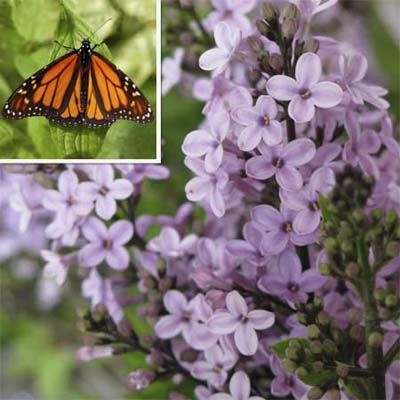
Monarchs are notorious fans of toxic milkweed varieties and yard-friendly lilacs. They also favor nectar-rich flowers such as zinnias, marigolds, and butterfly bushes. Providing a diverse selection of these plants will attract Monarchs and support their entire life cycle.
Painted Lady (Vanessa cardui)
Taking flight from May through October in the East and October through April in the South, these Painted Lady butterflies are world travelers. Often migrating to the States from northern Mexico, they live on every continent except Australia and Antarctica. They can be identified by orange, brown, and black uppersides. Undersides feature traces of orange with a brown and gray pattern. You’ll see two “eyespots” on the underside of the hindwings.
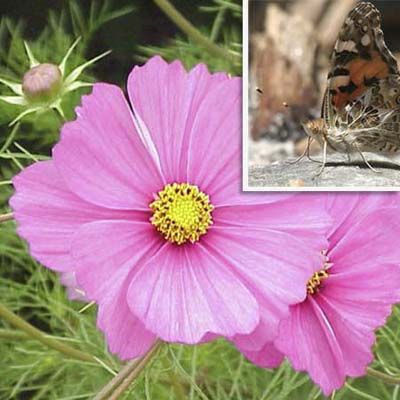
To create an inviting environment for Painted Ladies, plant various nectar-rich flowers such as asters, goldenrods, and joe-pye weed. These butterflies also enjoy basking in the sun, so incorporating flat stones or bare patches of soil in sunny areas of your garden can provide them with ideal resting spots.
Acmon Blue (Plebejus acmon)
These butterflies are active from March to October, primarily in western Oregon, Nevada, and southern California. Males are distinguished by their striking blue uppersides, while females often display brown uppersides. Both genders feature a distinctive red-orange band along the hindwings and white undersides dotted with black spots, making them easily recognizable during their flight season.
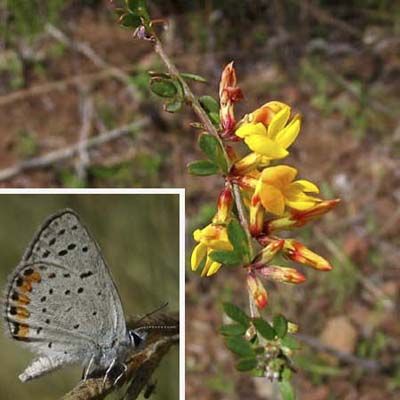
To support Acmon Blue butterflies, incorporate native legumes into your garden design. In addition to deerweed, you can add other host plants, such as lupines and vetches. A mix of nectar sources and host plants will create a well-rounded habitat for these beautiful butterflies.
Clouded Sulphur (Colias philodice)
Clouded Sulphurs make flights from spring to fall, appearing throughout the United States, except California, southern Texas, and Florida. The first spring arrivals bear less of the characteristic marks than fall forms. Look for semi-transparent, yellow-orange wings with dark spots near the top of each one. Clouded Sulphurs will also feature a lighter-colored, slightly larger spot on the hindwings. Some females feature white wings and similar markings.
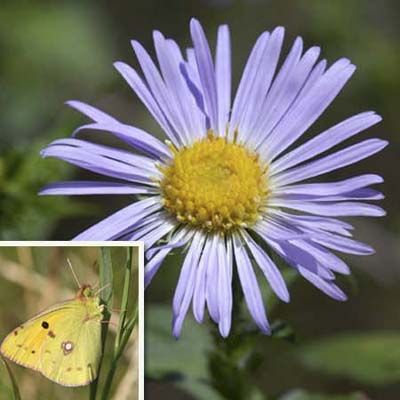
To attract Clouded Sulphurs, plant a variety of legumes such as clovers and alfalfa, which serve as host plants for their caterpillars. These butterflies enjoy nectar from various flowers, including asters, goldenrods, and dandelions. Incorporating these plants into your garden will create an inviting environment for Clouded Sulphurs throughout their active season.
White Admiral (Limenitis arthemis)
White Admirals are active from June to August across Northern New England, New York, Pennsylvania, Michigan, and Minnesota. They are easily identified by their black uppersides, which feature broad white bands across both wings. On the tips of their hindwings, you’ll notice a row of blue dashes and a row of red dots, adding to their distinctive appearance.
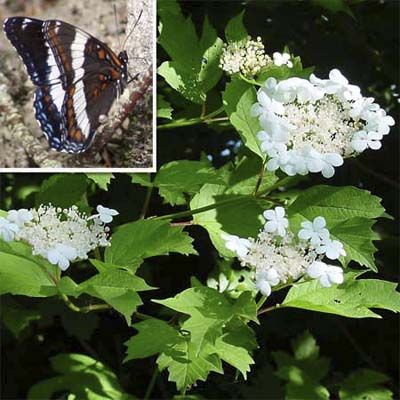
To create an ideal habitat for White Admirals, plant various trees and shrubs that serve as host plants and nectar sources. Cranberry bushes, birches, poplars, and willows are excellent choices for supporting their life cycle. Incorporating these plants will attract White Admirals and provide shelter and food for other butterfly species.
Black Swallowtail (Papilio polyxenes)
Black Swallowtails make up to three flights between April and November in the eastern United States to southern Colorado and southeastern California. You can identify them by the orange spot with a smaller black spot in the center near the tip of each hindwing. The female (shown) features an iridescent blue band on the hindwings.
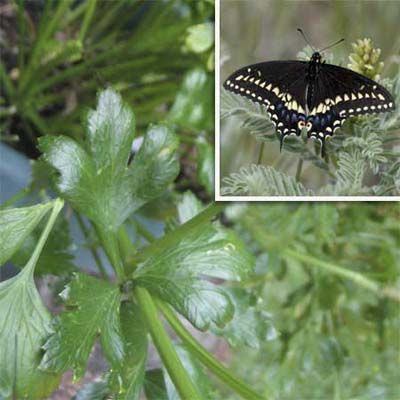
Plant various herbs from the carrot family, such as parsley, dill, fennel, and Queen Anne’s lace to attract them. These plants serve as both host plants for caterpillars and nectar sources for adult butterflies. In addition, you should include flowering plants like zinnias, lantana, and butterfly weed to provide a diverse range of nectar sources throughout the season.
How To Build a Butterfly Pond
With your plants selected, the next step in an attractive butterfly garden is a pond. A well-designed butterfly pond not only adds beauty to your garden but also offers vital resources that attract and sustain butterflies.
Follow the tips below to create your own butterfly pond.
1. Plan and Select a Location
Before you start digging, choose the right location for your butterfly pond. Select a sunny spot in your garden, as butterflies are cold-blooded and rely on sunlight to warm their bodies. The location should also be sheltered from strong winds, which can deter butterflies from visiting. Consider placing the pond near nectar-rich plants and host plants to create a complete butterfly-friendly environment.
When planning the size and shape of your pond, keep in mind that a smaller, shallow pond is better suited for butterflies. Ponds that are 2-3 feet in diameter and about 12-18 inches deep are typically ideal. Ensure that the pond is shallow enough at the edges for butterflies to safely land and drink.
2. Excavate and Line the Pond
Once you’ve chosen the location and determined the size, it’s time to start digging. Use a spade or shovel to excavate the area to the desired depth. Gradually slope the sides of the pond to create varying depths, which will allow butterflies and other wildlife to easily access the water.
After excavating, line the pond with a pond liner or heavy-duty plastic sheeting to prevent water from seeping into the soil. Smooth out any wrinkles in the liner, and anchor it in place with rocks or soil along the edges. Trim any excess liner, but leave a little overlap around the pond’s perimeter to secure it.
3. Add Substrate and Aquatic Plants
With the liner in place, add a layer of substrate to the bottom of the pond. You can use a mix of gravel, sand, or small pebbles to create a natural look and provide a stable base for aquatic plants. Aquatic plants play a crucial role in maintaining the pond’s ecosystem, providing shade, oxygen, and habitat for various creatures that butterflies may be attracted to.
Choose a variety of aquatic plants, such as water lilies, water hyacinth, and duckweed, which can float on the water’s surface and create a serene environment. Submerge plants like water iris or marsh marigold around the edges, where the water is shallow. These plants will help keep the water clean and provide resting spots for butterflies.
4. Create Puddling Stations
Butterflies need access to minerals that they obtain through puddling, where they drink from shallow water or damp soil. To create a puddling station in your butterfly pond, designate a shallow area where the water just covers a layer of sand or small stones. Sprinkle a pinch of sea salt, Epsom salt, or wood ash onto the sand to increase the mineral content.
Alternatively, place a shallow dish filled with the same materials near the pond, keeping it moist at all times. Position this station in a sunny area, as butterflies are more likely to visit when the sun is shining.
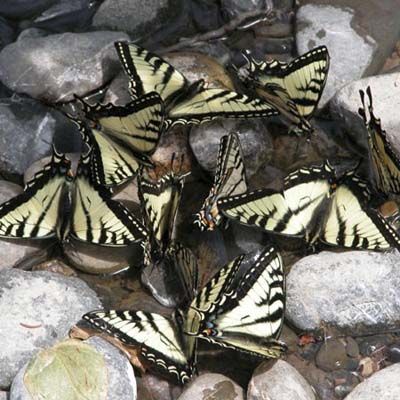
5. Add Rocks and Basking Spots
Butterflies love to bask in the sun, so providing flat, sun-warmed surfaces near the pond is essential. Arrange flat stones or rocks around the edges of the pond and within the surrounding garden, ensuring they receive plenty of sunlight throughout the day. These rocks will serve as perfect resting and basking spots for butterflies as they warm up and prepare to take flight.
Additionally, consider adding logs or driftwood around the pond to create a natural and inviting environment. These elements not only offer shelter and basking spots but also contribute to the overall aesthetics of the garden.
6. Maintain Your Butterfly Pond
Maintaining a butterfly pond requires regular care to ensure it remains a healthy and attractive environment. Regularly check the water level and top it off as needed, especially during dry periods. Remove any debris, such as fallen leaves, to keep the water clear and prevent algae growth.
Trim back any overgrown plants to maintain an open, sunlit area around the pond. If you notice mosquitoes or other pests, avoid using chemical treatments that could harm butterflies and other beneficial insects. Instead, consider introducing natural predators like fish or dragonflies to keep the mosquito population under control.
Additional Tips for Success With Your Butterfly Garden
By following these steps and tips, you can create a beautiful and functional butterfly pond that will attract and support these delicate creatures, enhancing your garden’s biodiversity and visual appeal.
- Avoid chemicals: Refrain from using pesticides or herbicides in your butterfly garden, as these can be harmful to butterflies and other wildlife.
- Include a waterfall or fountain: Adding a small waterfall or fountain can create a gentle water flow that attracts butterflies while helping to oxygenate the water.
- Seasonal care: Prepare your pond for the winter by removing sensitive plants and cleaning out debris. In the spring, refresh the water and check that the liner and plants are in good condition.
